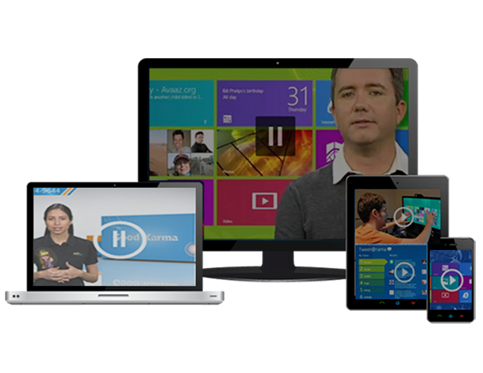 There is a feed called @houseofcoates on the popular micro blogging site Twitter, which as the name suggests, is the twitter account of the residence of Tom Coates, founder of a technology startup based out of San Francisco. The feed informs the world about mundane things that are important to it, like the temperature, whether the door has been left unlocked, where Tom Coates is at this moment, and so on. It gleans all this information on its own, from sensors, intelligent devices and connected systems that are governed by the pretty nifty IFTT (If this then that) tool. If temperature drops below a certain point, the house knows that it has to switch on the heating; if Tom comes home, it remembers to tweet out a welcome. The most amazing part of all this is that despite being one of the coolest things ever, probably a first in the internet of things, it cost relatively nothing at all.
There is a feed called @houseofcoates on the popular micro blogging site Twitter, which as the name suggests, is the twitter account of the residence of Tom Coates, founder of a technology startup based out of San Francisco. The feed informs the world about mundane things that are important to it, like the temperature, whether the door has been left unlocked, where Tom Coates is at this moment, and so on. It gleans all this information on its own, from sensors, intelligent devices and connected systems that are governed by the pretty nifty IFTT (If this then that) tool. If temperature drops below a certain point, the house knows that it has to switch on the heating; if Tom comes home, it remembers to tweet out a welcome. The most amazing part of all this is that despite being one of the coolest things ever, probably a first in the internet of things, it cost relatively nothing at all.
This is the kind of technological revolution that is coming, with the connected home getting more and more ubiquitous, and cheaper.
The analysts are predicting market values in billions. The global home security solutions market is expected to grow from $20.64 billion in 2011 to $34.46 billion in 2017 at a CAGR of 9.1% from 2012 to 2017.
In its connected home survey, Parks Associates also asked consumers: “Which products would you be interested in purchasing if they could be monitored or managed from inside your home or using a smart phone, or a tablet device?”
Answers showed that home safety products, such as smoke, fire and carbon monoxide detectors, ranked highest, followed by some of the security components, such as motion sensors and door and window sensors. Those were followed by energy control devices.
According to research, connected home devices are potentially the “Next Big Thing” in the consumer electronics industry and could reach a global market value of US$10 billion by 2014.
Let’s leave the market projections for a bit and come back to the basics. Everyone is bound to ask the same question – can the analysts be right? Where is consumer activity in the field?
Yes, there is.
Consumers are following the trends and already giving their assent to what seems like a minor revolution in the making. Worldwide shipments of smart TVs amounted to 66 million units in 2012, up 27 percent from 52 million in 2011.
The connected home is already here, if you look around. How many people around you do any or all of these things –?
² Use internet at work.
² Use internet somewhere else.
² Own a smart phone.
² Use the navigation feature on smart phones.
² Own at least one laptop.
² Own a tablet.
Almost all, yes? Which means they’ve already bought into a small part of the connected home story, as it is only a small step from here to automating regular home tasks and from there to dreaming up a full fledged connected home.
But who in the household would be interested in doing all this & why?
Analysts believe that women are more likely to be interested in setting up a connected home simply because of all their chores that can be automated – they can keep track of the house and its functioning from anywhere, save significant amounts of money in fuel efficiency and secure their residences against dangers. Adoption is picking up in households as tech savvy millennials take up more responsibilities, buy houses of their own, and bring their obsession with documenting their lives into their houses.
It’s time for us to pull up those socks and put our heads together to give customers what they are asking for.
The connected home is well and truly here.
Submitted by Vishal Dhar, iYogi.

